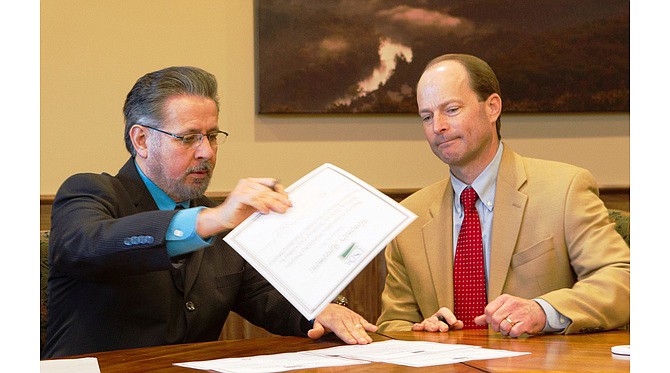The U.S. Department of Agriculture (USDA) and the Missouri Department of Conservation (MDC) are working together to improve grasslands, glades, and woodlands on private property.
A USDA grant of $1.3 million will be used to improve private lands for both wildlife habitat and agriculture production. MDC plans to match the federal grant monies over the next five years through its existing Private Lands Services program.
"The Missouri Department of Conservation has a proven track record of successfully implementing USDA conservation programs and we have brought millions in federal cost-share dollars to Missouri landowners," said MDC Private Land Services Division Chief Bill White. "Our partnership with the USDA is a national model."
It's truly upsetting to me that agriculture and conservation are so often pitted against one another. Living in rural Missouri, in a county with far fewer people than most suburban subdivisions, I am exposed to farmers and conservationists each and every day. Rarely do I see or hear any discord between these two sects of society.
When there is a problem, more often than not, the division is rooted in political, not personal, animosities. Until I became involved with conservation as a profession, the idea of agriculture and conservation being at odds with one another never dawned on me. Farms are often where we conservationists hunt, where we search for mushrooms, cut Christmas trees and spend time away from a world turning too fast. My greatest memories of taking to the field in pursuit of game as a youth all involve time spent on farms I will forever cherish.
It's my belief that most sportsmen understand and agree that without the support of our agricultural community, wildlife and wildlife habitat as we know it today would be drastically different. The truth is, conservationists are deeply indebted to farmers for the habitat and food they provide for wildlife on their lands, and for the opportunities they grant us to pursue our passions. And farmers, at least those whom I know personally, sincerely love the land they farm and truly desire healthy soil, clean water and enhanced habitat for wildlife.
"Quality of the land for both livestock and wildlife is one of our main concerns, and programs such as these that help us reach our goals are greatly appreciated," said Dennis Puppe, president of the Harrison County Cattleman's Association.
There are radical idealists at the far ends of every issue, but it's the silent majority of sensible moderates who tend to rule reality. And reality for most conservationists is that we must have a strong, positive relationship with the agriculture community. So while a select few politicians and outspoken citizens work to divide conservation and agriculture, the masses realize this notion of the two being at odds with one another is simply absurd.
The USDA's Regional Conservation Partnership Program (RCPP) exists to further the conservation, restoration, and sustainable use of soil, water, wildlife, and related natural resources by providing cost-share and incentives to private landowners. The $1.3 million in federal dollars was provided through the RCPP.
"We endorse the RCPP for glades and woodlands in southeast Missouri and offer to assist the Department of Conservation with regional outreach and education to promote healthy and sustainable woodlands," said Jim Summers, executive director of the Missouri Forest and Woodland Association.
As the world becomes more and more crowded and the demand for food production continues to increase, conservation and agriculture must find ways to work together to create a balance between production agriculture and quality habitat for fish, forest and wildlife. We will only accomplish this balance by working together. It's partnerships like this one between the USDA and MDC that will strike the balance and provide us the greatest future possible.
See you down the trail...
Brandon Butler, Conservation Federation of Missouri executive director, is an outdoors columnist for the News Tribune. Contact him at [email protected].

